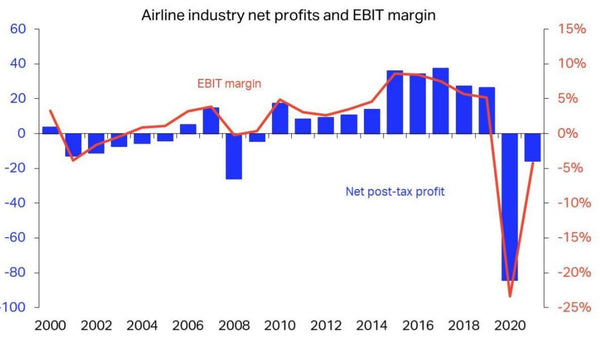Can Testing Help Save the Global Aviation Industry?
As everyone is well aware, the impact of COVID-19 on the aviation industry has been devastating. Never in history has any event ever come close to impacting global aviation on the same magnitude as COVID-19.
Source: IATA Economic Performance of the Airline Industry, June 2020
The global airline industry is forecast to lose a record $84 billion this year, which is 3.2 times higher than in the Global Financial Crisis. Travel demand is expected to gradually recover from the low point in April with the step-by step opening of markets. However, the extremely deep recession and loss of traveler confidence will have an impact on travel demand for the rest of the year.
As of mid-June 2020 there is still no effective treatment nor vaccine to be clinically proven to treat or prevent the symptoms of COVID-19 (Centre for Health Protection, 2020; World Health Organisation, 2020). While there is currently no vaccine for the virus, scientists collectively remain hopeful that an effective vaccine will be developed by mid-2021.
Until such time, how can the world get back up in the air?
While I have absolutely no qualifications in the medical realm, I do however have some experience in the aviation industry after flying for almost 13 years. From the early stages of my career I realised that the aviation industry is probably the most dynamic and cyclical industry in the world. The most important aspect of this realisation was the ability for aviation to quickly change and adapt. A prime example of this was the events that took place before and after September 11, 2001.
The airline industry has grown a great deal in comparison to the past. According to the authors of the book Policing Transportation Facilities, "twenty years ago airport police were viewed as a little more than custodians" (DeGeneste &Sullivan, 1994). Following 9/11, airports redefined security checks by implementing much more thorough and stringent checks on outbound passengers. Consequently, air travel today is extremely safe and secure. The risk of a mid-air hijacking or terror attack is as low as it has ever been.

Source: Aviation Safety Network
Aviation security is the perfect example of how the aviation industry has changed to mitigate external threats.
How can aviation adapt to mitigate its latest threat, COVID-19?
I believe the answer is in airport COVID-19 testing on outbound passengers.
Akin to aviation security, we could adapt aviation collectively through the oversight of industry governing bodies to implement testing as a COVID-19 mitigation strategy. Currently, COVID-19 tests take about 1 hour to 1 week to receive your test results, depending on which country or state the test is conducted. If it were possible to streamline the testing process in the airport environment to say below 30 minutes, we could test every outbound passenger wishing to travel prior to boarding their aircraft.
This idea is not complete fiction, as a team of researchers at the Hong Kong University of Science and Technology (HKUST) claim to have invented the world’s fastest portable 2019-nCoV diagnostic device. From sampling to testing, the device is apparently able to detect the novel coronavirus in just 40 minutes. In comparison, the Polymerase Chain Reaction (PCR) technology that is currently in use can take between 1.5 to 3 hours.
The proposed airport testing concept will operate as follows. If your COVID test returns a negative result, you can board the aircraft, if it shows a positive result, you will be escorted to seek medical advice. Social distancing practices and PPE (masks, gloves etc) could also be utilised within the airport environment to prevent viral transmission of potentially positive passengers.
In the same way a security x-ray machine ensures that the passenger sitting next to you does not have a 9mm Glock Pistol in their pocket, testing will achieve the same outcome. You'll be able to relax on your long-haul journey knowing that you won't contract the virus onboard. The arrival country who is accepting the inbound passengers will also have the reassurance that the arriving passengers are not carrying the virus. Therefore negating the requirements for strictly enforced quarantine doctrine.
While there is currently a risk and fear of contracting the virus among the public, what will also deter travelers is the varying degrees of quarantine requirements from state to state. Quarantine restrictions are currently seen as a significant inconvenience to any passenger who cannot afford two weeks of quarantine at each end of their journey. Testing will nullify these current quarantine requirements, which will encourage the general public to travel freely once again.
How could this possibly be achieved?
It is quite possible that this idea is just too large and too difficult to implement in the real world. It may require too much man power, infrastructure, and fiscal investment. A vaccine and treatment may even be discovered and distributed in a matter of months, not years; before this idea could even be realised.
But let me ask you one question.
What will we do in the future if this happens again, a new, even deadlier strain of virus begins to spread?
Can aviation afford this?
Perhaps investing in virus detection facilities in airports globally will pay dividends, not only now, but forever.
1 comment
Brilliant post and absolutely agree!

